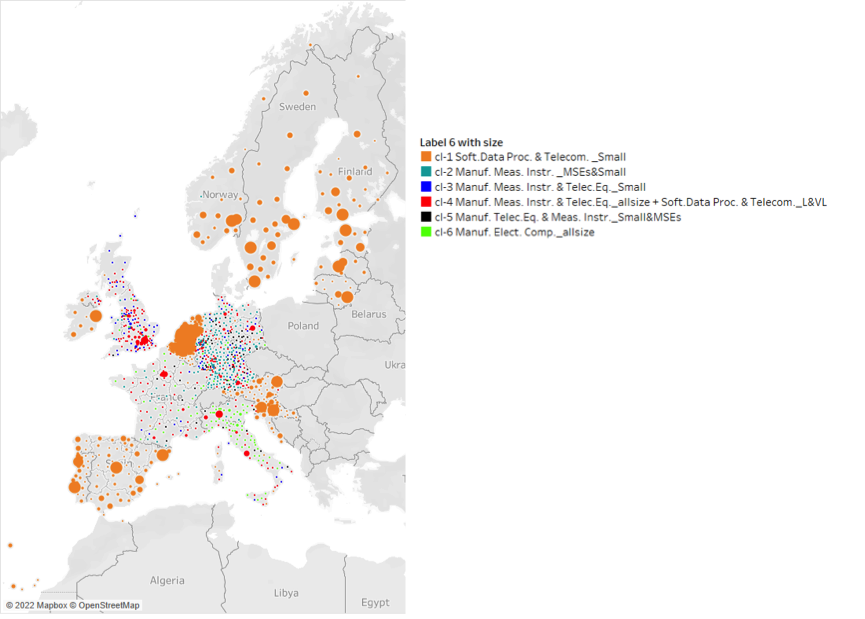New digital technologies associated with Industry 4.0 (I4.0) – Internet of Things (IoT), cloud services, big data and analytics – are transforming sectors, value chains and production systems.
Leveraging the potential of key enabling technologies such as the IoT to drive economic growth and job creation is an important development strategy for regions, particularly in high-income economies. To exploit such potential, however, regional economies need to possess the required competences. The presence of a sizeable set of firms providing core elements of the technology, or parts of the value chain, is crucial for a region to be ‘on the map’ of technological and industrial development. Moreover, given the specific systemic characteristics of IoT, a combination of very different competences is needed to be able to produce workable solutions.
In a recent study published in Papers in Regional Science, we proposed an original methodology to map the regional distribution of IoT competences in Europe. The objective is to help us understand the extent to which European regions possess the technological competences in IoT that may drive further technological developments and consequent growth of related and new industries in the region.
Our approach involved identifying firms’ production competences in different activities related to IoT, and mapping their presence in 18 European countries, at regional (NUTS3) level. The originality in our approach lies in the identification of groups of NACE codes that are associated with specific IoT-related activities (which we call ‘IoT domains’), where the association between IoT domains and corresponding NACE codes built upon the automated text analysis of firms’ textual descriptions of their activities.
This geographic mapping allowed us to identify regions where the full IoT value chain is present, and regions where substantial manufacturing or software and telecommunication components of the IoT value chain are present, but not the full value chain. Drawing on such mapping, and on the analysis of regional socioeconomic conditions, we were able to discuss policy implications for the development of IoT in Europe.

Our mapping exercise pointed out that IoT competences are spread across European regions, such that most regions feature some types of IoT competences. However, our findings told the story of a sort of “IoT-divide” between parts of Europe. On one side, we find North -West Europe, city capitals, and some hubs scattered in some locations in manufacturing regions. These areas, we argued, exhibit the greatest potential to exploit the multiple benefits of the IoT as a key enabling technology. The other European regions exhibit much less potential in this sense. For example, Eastern European regions focus on software data processing and telecommunications, without the ability to provide cross-layer IoT value chains. A similar situation is found in the Mediterranean touristic regions characterised by traditional economies.
Bringing to light the IoT divide leads to significant implications for Europe-wide policy. At the moment, the European IoT/Digital Transformation Space is divided in two sets of regions: those that have (a full range of) IoT competences and those that do not. Yet, the complexity of IoT and similar enabling technologies requires that all regions scale up in order to fully exploit their technological potential. Therefore, the divide needs to be bridged and this is a policy implication for Europe, and the EU in particular, in its entirety. Country level policies are also important for supporting such developments, enhancing the creation of strategic infrastructures, such as telecommunications and connectivity.
For more details about the study please see the full paper (available in Open Access mode):
Russo, M., Caloffi, A., Colovic, A., Pavone, P., Romeo, S. and F. Rossi (2022) Mapping regional strengths in a key enabling technology: The distribution of Internet of Things competences across European regions, Papers in Regional Science, https://doi.org/10.1111/pirs.12679.
Navigation of the results is freely accessible online with our explorer tool, created with Tableau Public.

